Soo-Min Kim
Free-Space Optical Communications for 6G-enabled Long-Range Wireless Networks: Challenges, Opportunities, and Prototype Validation
Sep 16, 2022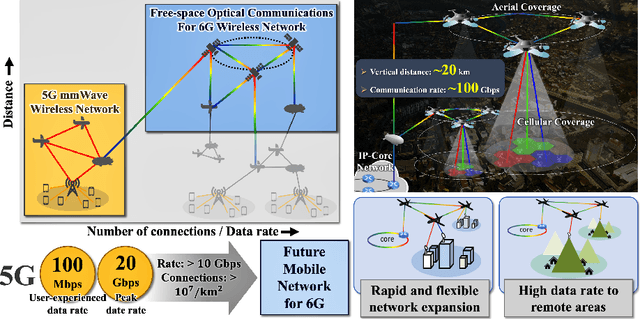
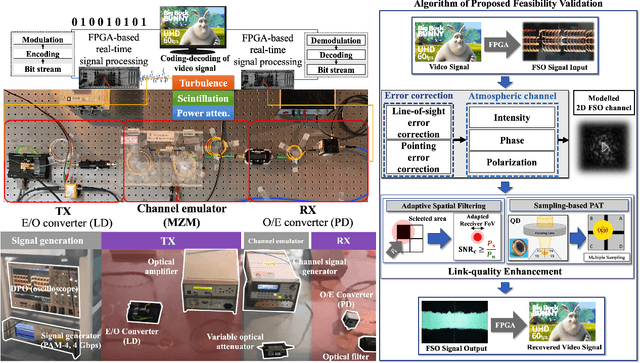
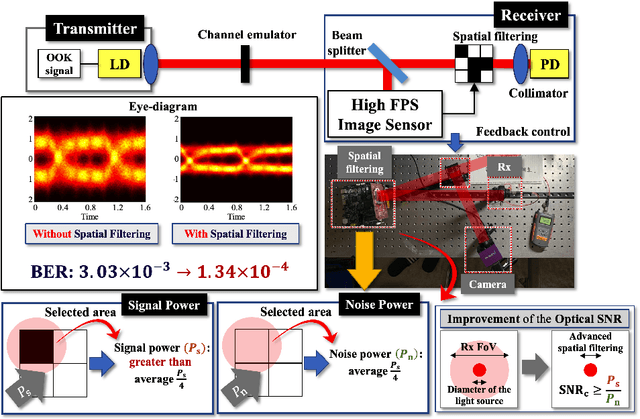
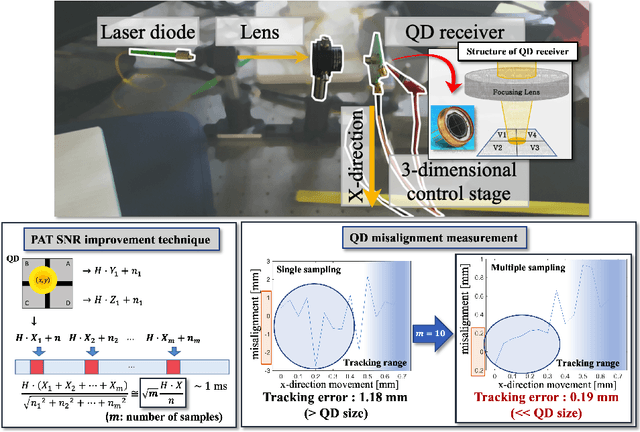
Abstract:Numerous researchers have studied innovations in future sixth-generation (6G) wireless communications. Indeed, a critical issue that has emerged is to contend with society's insatiable demand for high data rates and massive 6G connectivity. Some scholars consider one innovation to be a breakthrough--the application of free-space optical (FSO) communication. Owing to its exceedingly high carrier frequency/bandwidth and the potential of the unlicensed spectrum domain, FSO communication provides an excellent opportunity to develop ultrafast data links that can be applied in a variety of 6G applications, including heterogeneous networks with enormous connectivity and wireless backhauls for cellular systems. In this study, we perform video signal transmissions via an FPGA-based FSO communication prototype to investigate the feasibility of an FSO link with a distance of up to 20~km. We use a channel emulator to reliably model turbulence, scintillation, and power attenuation of the long-range FSO channel. We use the FPGA-based real-time SDR prototype to process the transmitted and received video signals. Our study also presents the channel-generation process of a given long-distance FSO link. To enhance the link quality, we apply spatial selective filtering to suppress the background noise generated by sunlight. To measure the misalignment of the transceiver, we use sampling-based pointing, acquisition, and tracking to compensate for it by improving the signal-to-noise ratio. For the main video signal transmission testbed, we consider various environments by changing the amount of turbulence and wind speed. We demonstrate that the testbed even permits the successful transmission of ultra-high-definition (UHD: 3840 x 2160 resolution) 60 fps videos under severe turbulence and high wind speeds.
Demo: A Transparent Antenna System for In-Building Networks
May 19, 2022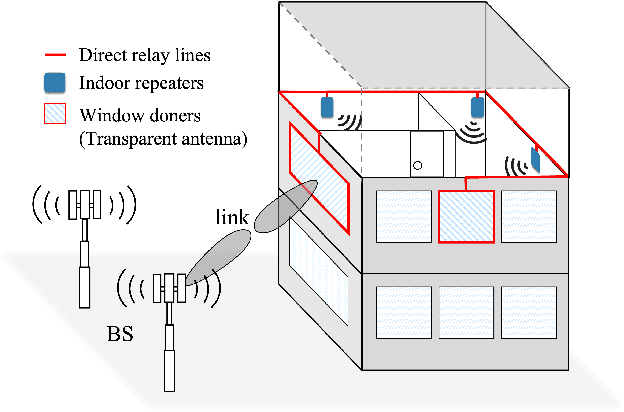
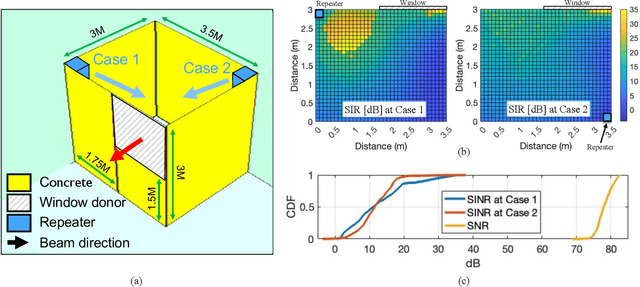
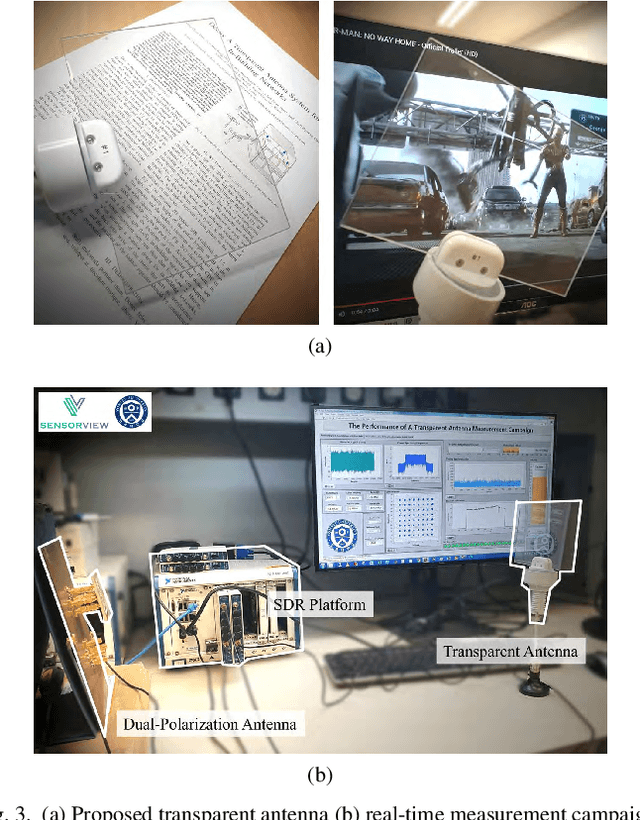
Abstract:For in-building networks, the potential of transparent antennas, which are used as windows of a building, is presented in this paper. In this scenario, a transparent window antenna communicates with outdoor devices or base stations, and the indoor repeaters act as relay stations of the transparent window antenna for indoor devices. At indoor, back lobe waves of the transparent window antenna are defined as interference to in-building networks. Hence, we analyze different SIR and SINR results according to the location of an indoor repeater through 3D ray tracing system-level simulation. Furthermore, a link-level simulation through a full-duplex software-defined radio platform with the fabricated transparent antenna is presented to examine the feasibility of the transparent antenna.
What we really want to find by Sentiment Analysis: The Relationship between Computational Models and Psychological State
Jun 03, 2018



Abstract:As the first step to model emotional state of a person, we build sentiment analysis models with existing deep neural network algorithms and compare the models with psychological measurements to enlighten the relationship. In the experiments, we first examined psychological state of 64 participants and asked them to summarize the story of a book, Chronicle of a Death Foretold (Marquez, 1981). Secondly, we trained models using crawled 365,802 movie review data; then we evaluated participants' summaries using the pretrained model as a concept of transfer learning. With the background that emotion affects on memories, we investigated the relationship between the evaluation score of the summaries from computational models and the examined psychological measurements. The result shows that although CNN performed the best among other deep neural network algorithms (LSTM, GRU), its results are not related to the psychological state. Rather, GRU shows more explainable results depending on the psychological state. The contribution of this paper can be summarized as follows: (1) we enlighten the relationship between computational models and psychological measurements. (2) we suggest this framework as objective methods to evaluate the emotion; the real sentiment analysis of a person.
 Add to Chrome
Add to Chrome Add to Firefox
Add to Firefox Add to Edge
Add to Edge